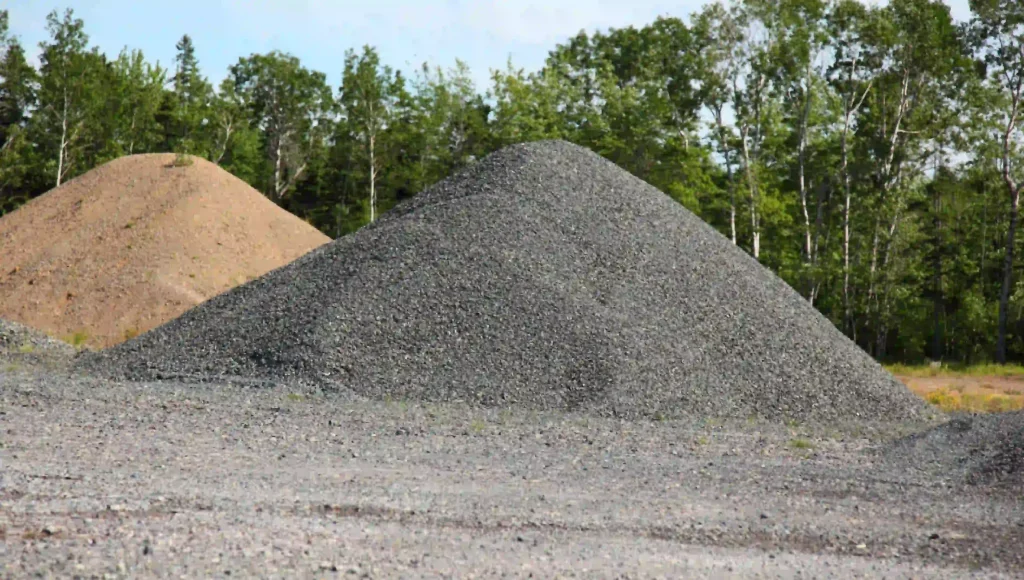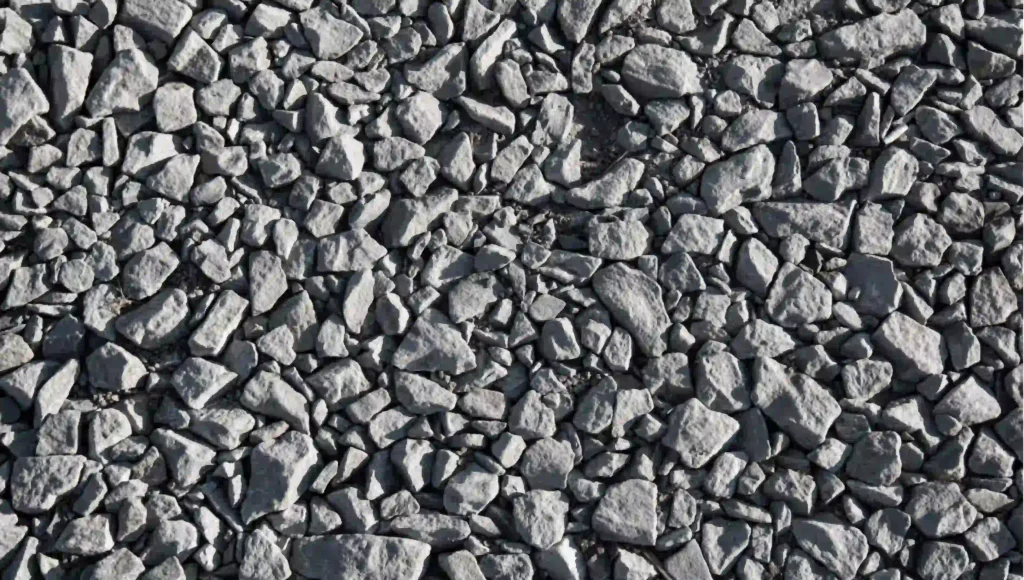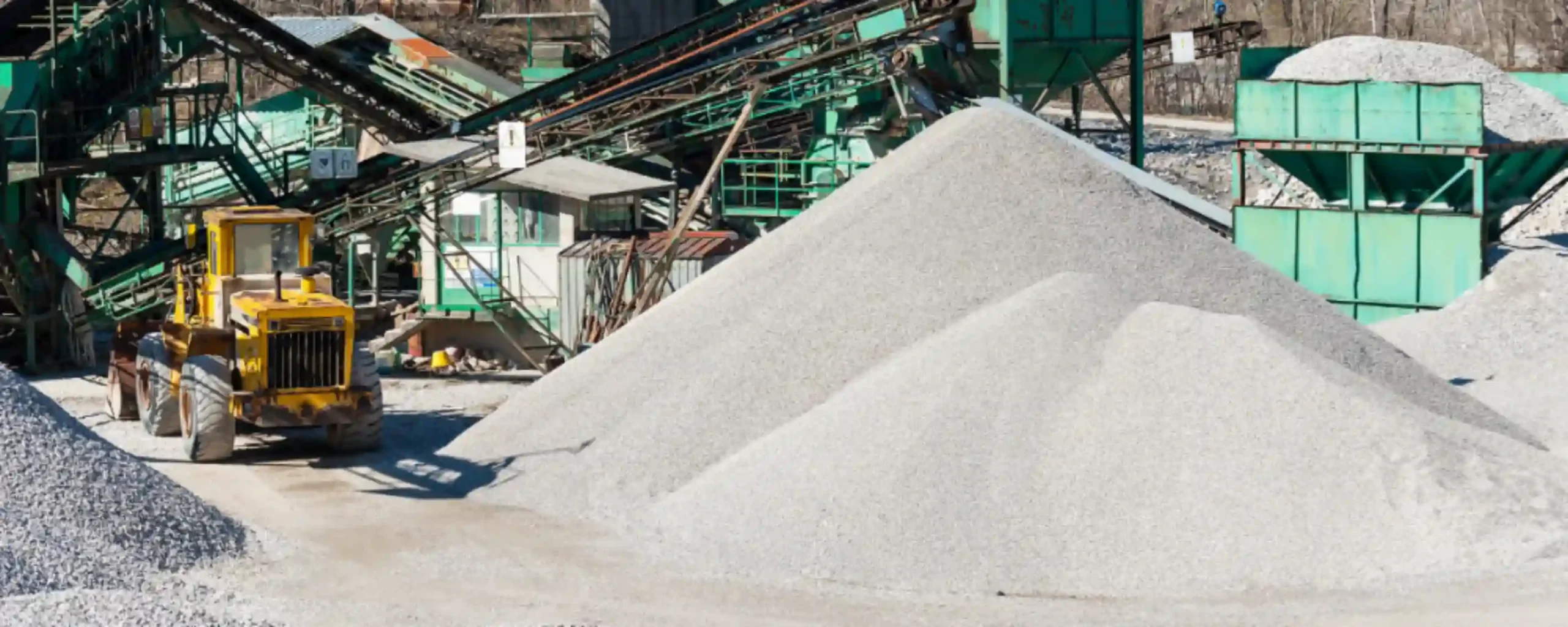Introduction
Aggregates were found on Earth even before humans existed. They are formed from volcanoes, glaciers, water, and, with time. They provide strength, durability, and workability to the mix. Therefore, the selection of the aggregate plays an important role. In today’s blog from Brick & Bolt, you will understand the aggregates and their impact on the construction industry. Let’s delve deeper for comprehensive knowledge about its functions and the importance of its role.
What is Aggregate in Concrete?

Aggregates are granular geological materials. It is an essential ingredient for construction. It increases the mechanical strength of the concrete by making it compact. Aggregates are composed of crushed stones, rock sand, and gravel. These are mixed with cement and water to obtain the final product. It has various applications in projects like railway runways, parking lots, walkways, etc. They are classified into two categories based on size: Fine aggregates and Coarse aggregates.
What are Fine Aggregates?
Fine aggregates are smaller particles. They have a diameter of less than 4.75 millimeters(the size range is typically 0.075 mm to 4.75 mm). For example: sand. They are typically made of crushed stone, natural sand, or manufactured sand. It is utilized to fill the voids in between coarse aggregate. Fine aggregates enhance the workability of the concrete and promote its overall strength.
What is Coarse Aggregate?
Coarse aggregates are generally larger particles. These have diameters greater than 4.75 millimeters. For example: gravel and crushed stones. They are obtained from natural sources like quarries, riverbeds, gravel pits, etc. The coarse aggregates are used for concrete production for roads and buildings. It provides stability to railway tracks.
Functions of Aggregate in Concrete

The aggregates have multiple functions related to concrete.
- The aggregate materials in concrete improve the mechanical strength as it is more compact.
- It also helps to reduce the amount of cement required, making it more economical. The concrete contains aggregates, which provide the necessary volume and bulk.
- Aggregate enhances strength with improved durability. It helps to distribute the load and reduces stress. The aggregate, with its rich durability, enables it to withstand environmental conditions.
- Aggregate helps restrain crack development. It enhances properties such as thermal resistance and elasticity in concrete.
- They also bring stability, volume, and dimension. The aggregate has control over the shrinkage. It also prevents the cracking of the concrete.
- The texture of the aggregates can be smooth or rough. It also comes in a variety of shapes, both flat and rounded. The shape and texture have a significant influence on the concrete’s workability. It also affects the overall performance during the mixing and curing of the concrete.
Important Characteristics of Aggregate in Concrete
- A well-graded aggregate should typically be within the size range of 1/8 to 2 inches; however, most guidelines suggest sizing coarse aggregates between 3/8 inch and 1.5 inches (9.5 mm to 37.5 mm) based on project requirements. Aggregates larger than 3 inches are not suitable for most concrete applications.
- The process of distribution of aggregates based on sizes is called grading. The aggregates are significant because they influence the arrangement of particles. This determines the number of voids in the concrete and its other properties.
- The surface texture of the aggregate plays a major role in determining the comprehensive strength. The fine aggregate can have a surface texture as both rough and smooth.
- The specific gravity is the ratio of the aggregate mass to the volume of water. This is primarily used for proportioning concrete mixtures and performing calculations.
- The percentage of aggregates in concrete can vary depending on the specific mix design, usually between 60% to 75% by volume. For certain structural concrete, these values may vary
- Aggregates with low permeability influence the flow of water. Concrete with less permeability restrains water flow.
- The thermal properties of concrete are thermal conductivity, thermal expansion, and heat capacity. These properties are highly controlled by the aggregates used in the concrete.
- High modulus of elasticity in aggregates results in stiffer, more brittle concrete, which affects how it handles loads and temperature changes.
- Aggregates must be free from harmful contaminants. Harmful substances can react with cement and affect the hydration process. Organic matters like clay silt can affect the concrete.
Types and Classification of the Aggregates
Aggregates can be classified based on origin and density, among other criteria.
Based on the Origin
- Natural Aggregates: These are obtained naturally from rocks including metamorphic, igneous, and sedimentary types. They are extracted from large rocks by an open excavation process. This includes materials such as gravel, sand, and crushed stone.
- Processed Materials: These include recycled concrete, synthetic aggregates, and slag(blast furnace slag is used in various forms, including granulated and air-cooled), which are manufactured into artificial aggregates.
Based on Density
- Lightweight Aggregates: The bulk density of these aggregates is less than 1120 kg/m3. They have applications in lightweight concrete mixes. For example: slate, pumice, and clay.
- Normal weight aggregate: These have a bulk density between 1520 and 1690 kg/m3. It is used for construction purposes that require a standard mix of concrete.
- Heavyweight aggregate: They have a bulk density greater than 2080 kg/m3. They include materials like magnetite and barite.
Based on the Geological Classification
- Igneous rock: It is highly durable and hard. The aggregates are extracted from granite and basalt.
- Sedimentary rock: The durability and hardness depend on the source, commonly extracted from sandstone and limestone. These aggregates are commonly extracted from sandstone and limestone.
- Metamorphic rock: These aggregates are strong and durable. These are extracted from marble and schist.
Uses and Applications of Aggregates in Concrete
- Aggregates form the foundational support for building construction, facilitating the weight-bearing capacity of structures. They are essential in formulating concrete mixes for floors and walls, influencing durability and resistance.
- The floors and walls require aggregates in the concrete mix to determine their durability by providing the necessary resistance.
- Aggregates are essential for road and highway construction. They form the base layers, providing stability and load-bearing capacity.
- Aggregate can influence the concrete load-bearing capacity. Therefore, it also helps in building bridges and dams.
- Aggregates are also used to create decorative concrete surfaces. They give excellent finish and aesthetic; they can be used in driveways, walkways, etc.
- Marine and coastal structures are designed using aggregates found in concrete. It can be used to construct sea walls, which prevent erosion and water damage.
- Aggregates can be used in concrete for industrial flooring. It provides the greatest support and prevents erosion and water damage.
- Aggregates used in concrete help design the drainage system. As it manages the water flow, it can control erosion.
- Recycling aggregates used in concrete can improve sustainability by reducing waste.
Conclusion
Aggregate is essential for concrete preparation as it highly influences its performance. From ancient civilizations to the present day, aggregates are evolving. Architects have played a crucial role in the construction industry. It has various application ranges, from foundation implementation to big infrastructure projects. It helps bring sustainable practices along with a decorative finish.
Aggregates provide a vital contribution. They decide the cement’s durability, strength performance, workability, and other properties. Its selection is important in bringing effective outcomes. The type of shape, structure, and extraction is determined by the aggregate used in the concrete. With advanced technology, aggregates can be recycled and used to develop high-performance concrete.

